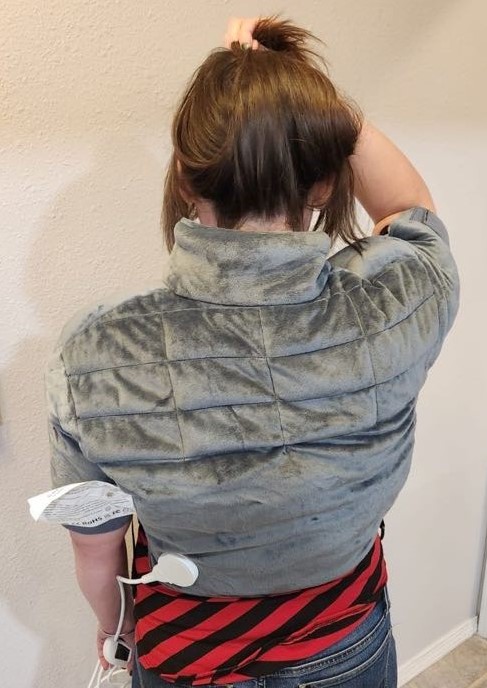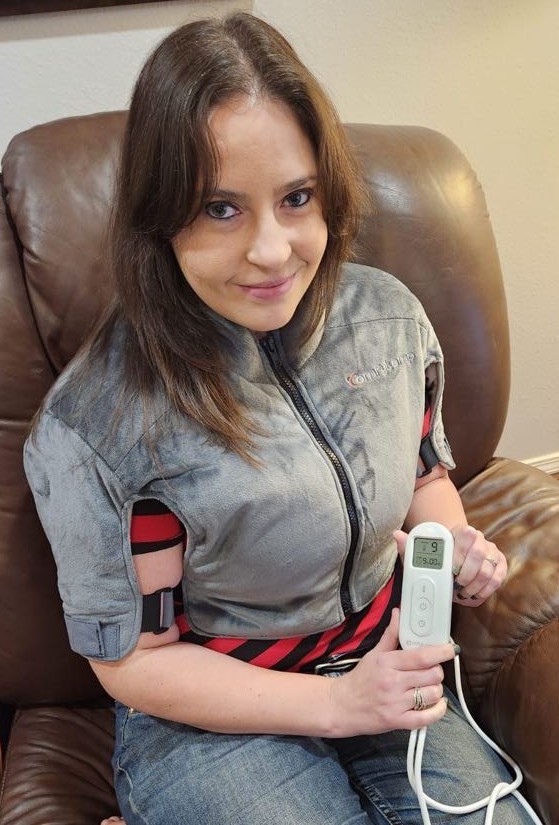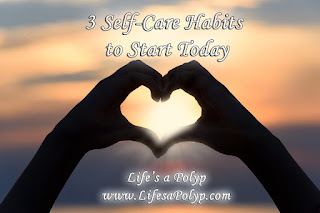 |
Most of us are aware of the popular saying that “what doesn’t kill you makes you stronger”, which was shortened from the original saying penned by philosopher Friedrich Nietzsche. Nietzsche, who is a fascinating philosopher to study, argued that while life’s suffering provides an opportunity for growth and building strength, the ability to build strength from suffering comes from existing strength within someone. This is a view that has been told and retold throughout written history before and after Nietzsche.
This all aligns perfectly with a renewed outlook on the saying “what doesn’t kill you makes you stronger”. Perhaps you have seen this new perspective tweeted by @rkkaay that has been shared around the internet:
“Your trauma made you stronger. No, my trauma made me traumatized, it made me weak, gave me sleepless nights and memory loss, it gave me feelings I’ve never wanted. I made myself stronger, by dragging myself out of a dark place and dealing with consequences that weren’t my fault”.
I absolutely love both perspectives of how hardship and trauma provide an opportunity for building strength. It is ultimately, within us where the true strength lies and is activated by trauma. The trauma is merely a trigger signaling to us to build from the trauma experience. By viewing life's hardships in this manner, the power is restored to the individual. It is not the trauma that holds power over us, it is we who holds power over the trauma. This is an incredibly vital understanding for processing trauma, particularly if the trauma has led to Post-Traumatic Stress Disorder (PTSD).
As a rare disease patient whose medical experiences led to the development of medical PTSD, I realize firsthand how powerless and helpless PTSD can leave one feeling, especially when combined with depression. It can become completely crippling to one's efforts to participate in normal daily functioning.
Not only can recognizing that the ability to grow and build from trauma lies within oneself instead of externally be life-changing by itself but also identifying and acknowledging where the growth shows itself in one's life as well. When we build from our inner strength through hardships, there are common perspectives or understandings that many of us adopt or learn. These new understandings are quite powerful in themselves as well.
Empathy Not Sympathy
It can be difficult at times to empathize with others and their experiences when we don't have any experiences to help us relate to another's. Many confuse empathy with sympathy; however, they are drastically different. Sympathy is a feeling of pity for another and their experience, it stems from a desire for us to not have the same bothersome experience of someone else's with a motive to not feel the discomfort that thinking of another's experience triggers within us. Whereas empathy is compassion for another's hardship with relation and understanding of their experience without any underlying motive about our own feelings but rather a focus on their feelings. When we experience a trauma, it broadens the realm of life experiences we encounter and by doing so, it allows us to build our empathy for others and their hardships. While one hardship may not be exactly the same to another person's hardship, our ability to relate progresses and based off our experiences we can find compassion for that of another's even when they are on the surface very different. When we relate to one another on a deeper level, we can provide and receive support from one another - strengthening our social connections. And strong social support in turn increases our resiliency to hardship.
Community Building
This is why community is so important for one's well-being. Often times, especially for men, the notion of being completely independent to the point of not allowing any help or support from another person whether it's physical, emotional, mental, or financial becomes romanticized and striven for by many. However, in reality, such extreme independence can negatively affect one's mental health as it leaves one vulnerable to feelings of shame, guilt, worthlessness when support is required. When these conflicting beliefs and feelings are not resolved, the dissonance can lead to new hardships created by a maladaptive attempt to stop the contention resulting in chemical dependency or substance abuse, for example. We see this struggle between what one believes they should be as a hyper independent person and the reality of requiring some type of support most often among men and individuals in careers that emit or require a presentation of unusual strength physically and mentally, for example military and law enforcement. These are also fields that provide unique experiences that the general population is not subjected to in most cases. For these reasons, community building of those with similar experiences becomes even more crucial and when psychological conditions and maladaptive behaviors occur that require a higher level of intervention and such communities can be very helpful.
I've experienced the need for such a specific type of community in my own medical experiences as a child and teenager with an ostomy and as a rare disease patient. Attending The Youth Rally and UOAA conferences were life changing in their own rights for me as an ostomate - I was able to meet and develop lifelong friendships with others of my own age who also had ostomies. And through the online rare disease community, I finally found the connections I so desperately needed as a child who didn't know anyone else outside of my family with my rare diseases.
I learned over the last two years in my metaphysical classes that receptivity to the support of another is not just about us receiving from one another, but it is also about the other person who is wanting to give. By receiving their support, we are giving them that opportunity to give, to grow themselves, to increase our social bonds to one another. As a giver, it can be difficult to receive from others and I try to remember this now when someone is wanting to give to me.
Self-Care
As I finally learned self-care in 2022 and after many trial and error attempts, I've learned how to also maintain self-care now, I have a new appreciation and understanding of self-care. Self-care is difficult to learn or achieve when we are in a survival mode but eventually, our minds and bodies will force us to learn self-care if we want to improve our mental and physical health. This is another difficult task for a giver which can be bred through hardship as well. My own medical trauma led me to want to give to others to help them through theirs and so I often gave more of myself than I had to give and once I stopped living in survival mode, my mind and body let me know it was time to learn self-care. Part of self-care is managing our energy and health needs to protect ourselves from burning out or causing more harm to ourselves. Like any habit we want to create, we can start small and build upon that starting point. We won't learn self-care in one fell swoop, it's a learning process just like the rest of life.
Building Appreciation
A common negative thought pattern that we all practice at times is discounting the positive and focusing on the negative. We do this also when we practice all or nothing thinking, black and white thinking. Both of these cognitive distortions make it difficult to appreciate the good, the positive in experiences and in life in general. An attribute of resiliency is the ability to practice appreciation and gratitude. Some days this may be harder than others but at the end of the day, being able to step back and find something to be grateful for even on the hardest of days can make the difference in reducing the hold of depression. This is not to say that positive thinking or gratitude are a cure all for depression, but they are healthy coping mechanisms that can be employed during hardships to help us decrease the mental toll of a difficult time. When experiencing a chronic hardship, such as with chronic illness, a person has two paths they can choose to take - either it can become so difficult to appreciate the good moments because one is so bogged down by the fear of the next let down OR the good moments can be savored and reflected upon with fondness and deep appreciation. Personally, I find great joy in relishing the good moments, savoring them and appreciating them in all their glory. When we have chronic pain and we do an activity without resulting in a pain flare, that's something to appreciate. When our doctor's appointment or test results are good or better than we anticipated, that's something to appreciate. When we remembered all of our medications without missing any of them, that's something to appreciate. The beauty of appreciation is that appreciation doesn't have to be for something huge - it can be for literally anything. And when we find moments of gratitude, we are building up our inner strength.
Gaining New Perspectives
As we develop each of the previously discussed skills and healthy coping mechanisms, we can begin to gain a new perspective, a wider perspective. When we feel pinned down by a difficult time, our view of the situation at hand can quickly become hyper focused and narrowed creating tunnel vision. Negative thought patterns will arise during tunnel vision as well and depending on the narrowed view we are taking, we may become overwhelmed by feelings of hopelessness, stress, defeat, fear, anxiety, etc. When we notice such moments, it is important to engage in behaviors to help widen our view once again and looking at the situation from a different viewpoint. In the midst of a crisis, or what even feels like a crisis, this can be challenging. Taking a moment to pause, to avoid rumination, regroup with the larger picture in mind and consulting with others are all small steps that can drastically change one's view on a difficult situation. For example, when my last surgeon said that there wasn't anything else for him to do about my chronic, debilitating pain that developed 2.5 weeks after my gallbladder removal, I was overcome with a brief period of depression and utter devastation. After I cried my heart out for hours and probably took a nap from exhaustion, I awoke with a new perspective on my pain and was able to devise a new plan of action for finding out what was causing my pain and for any possible effective treatments. It was with this wider view of the big picture that I was able to draw upon my inner strength to carry me through the next 6.5 months that it would take to obtain a diagnosis and effective treatment plan.
I struggle with catastrophizing potential future events, fixating on the worst-case scenario I can possibly imagine. This is a cognitive distortion that I continue to work on in my EMDR therapy and stems from my medical PTSD. I am becoming better equipped to identify when I am catastrophizing potential future events and exploring a new perspective of moderation, reducing my all or nothing thinking in regard to my fears. The more that I am able to practice this, the more I am gaining a new perspective on life, my future, and how I can cope in healthier ways.
Ultimately, we get to choose how we are going to respond to hardships in life. Responding and reacting are two different things. Reaction is that knee jerk reaction without any thought involved, however, responding is when we take the time to decide how we want to respond instead of automatically going with our initial gut reflex. Learning how to respond is part of healing and building upon the strength within ourselves that can be shown to us through difficult times. For even appreciation can be given to a hardship for the opportunity it provides to grow, for revealing what may not have been visible to us previously. Until that time, when facing a difficult moment and awaiting to come out on the other side of it, we can engage in daily practices to keep us above water while we are navigating those periods.












